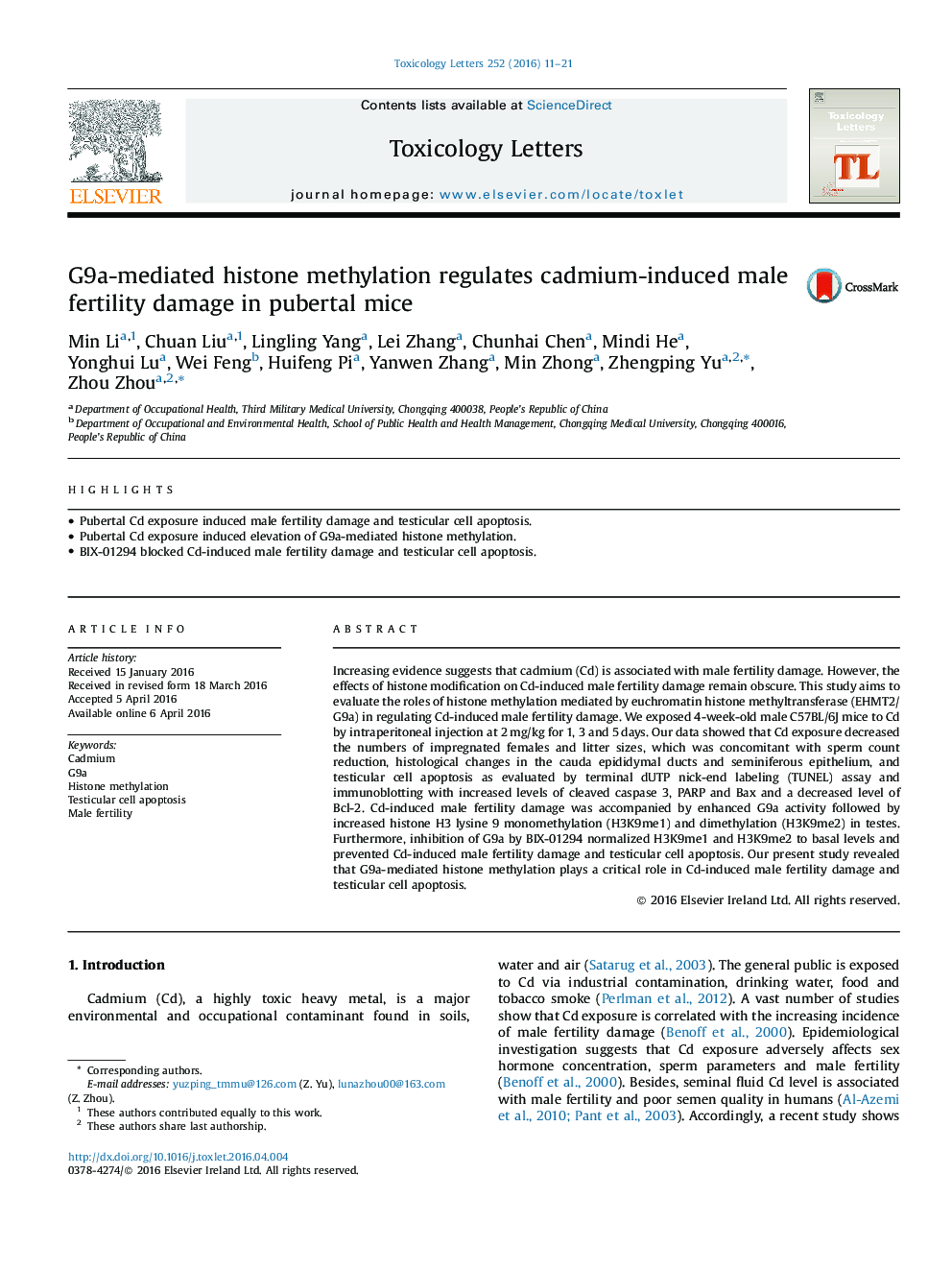| Article ID | Journal | Published Year | Pages | File Type |
|---|---|---|---|---|
| 5859783 | Toxicology Letters | 2016 | 11 Pages |
â¢Pubertal Cd exposure induced male fertility damage and testicular cell apoptosis.â¢Pubertal Cd exposure induced elevation of G9a-mediated histone methylation.â¢BIX-01294 blocked Cd-induced male fertility damage and testicular cell apoptosis.
Increasing evidence suggests that cadmium (Cd) is associated with male fertility damage. However, the effects of histone modification on Cd-induced male fertility damage remain obscure. This study aims to evaluate the roles of histone methylation mediated by euchromatin histone methyltransferase (EHMT2/G9a) in regulating Cd-induced male fertility damage. We exposed 4-week-old male C57BL/6J mice to Cd by intraperitoneal injection at 2Â mg/kg for 1, 3 and 5Â days. Our data showed that Cd exposure decreased the numbers of impregnated females and litter sizes, which was concomitant with sperm count reduction, histological changes in the cauda epididymal ducts and seminiferous epithelium, and testicular cell apoptosis as evaluated by terminal dUTP nick-end labeling (TUNEL) assay and immunoblotting with increased levels of cleaved caspase 3, PARP and Bax and a decreased level of Bcl-2. Cd-induced male fertility damage was accompanied by enhanced G9a activity followed by increased histone H3 lysine 9 monomethylation (H3K9me1) and dimethylation (H3K9me2) in testes. Furthermore, inhibition of G9a by BIX-01294 normalized H3K9me1 and H3K9me2 to basal levels and prevented Cd-induced male fertility damage and testicular cell apoptosis. Our present study revealed that G9a-mediated histone methylation plays a critical role in Cd-induced male fertility damage and testicular cell apoptosis.
